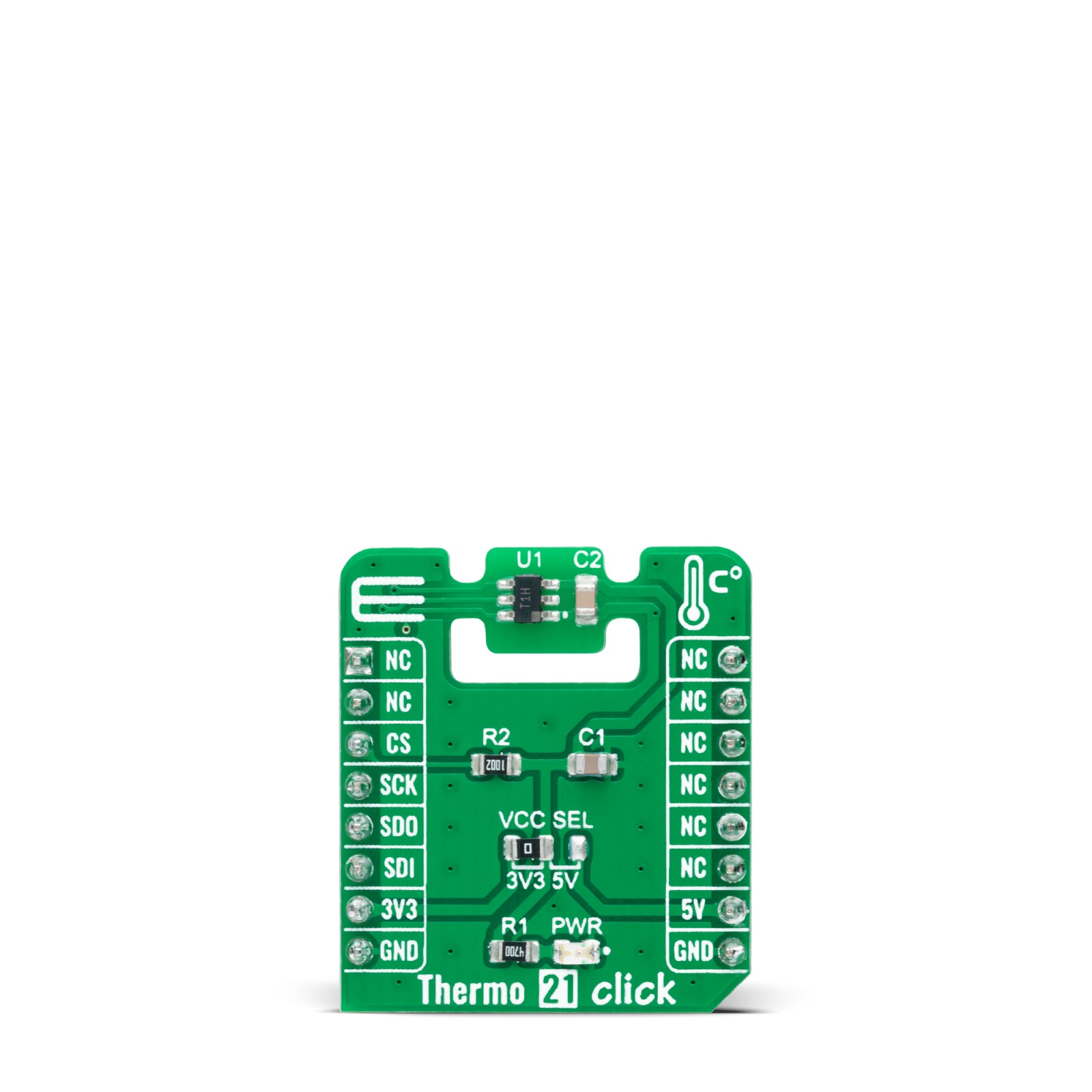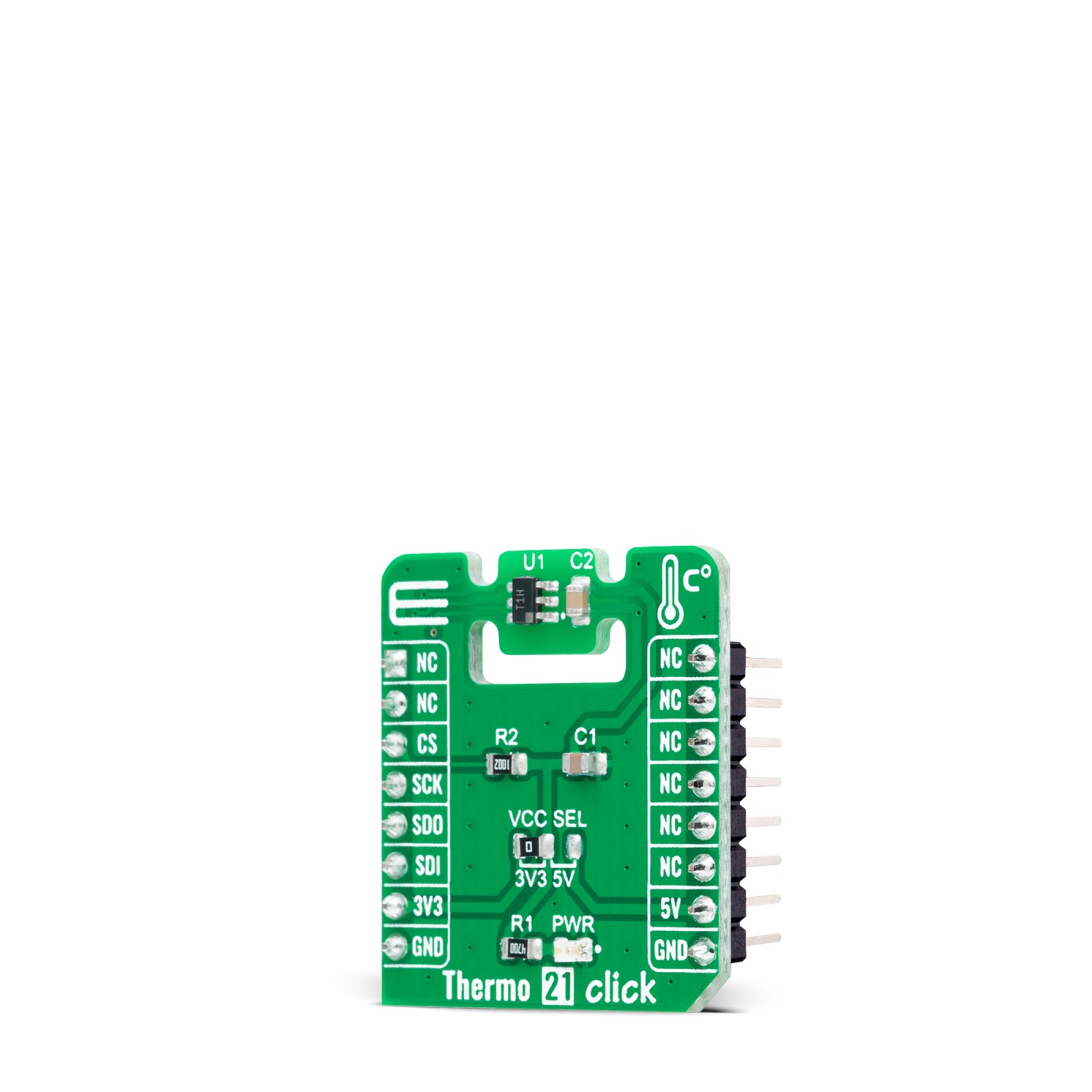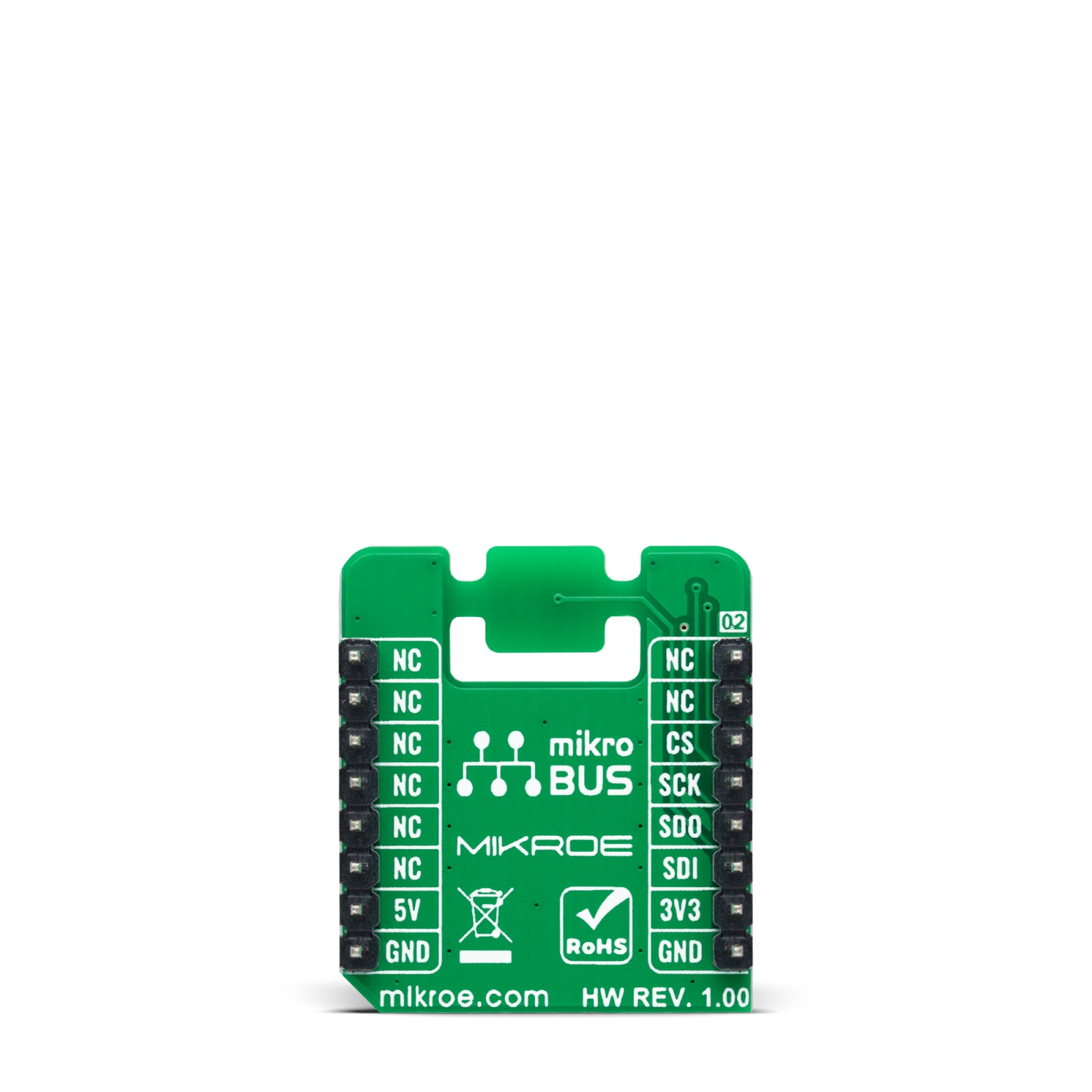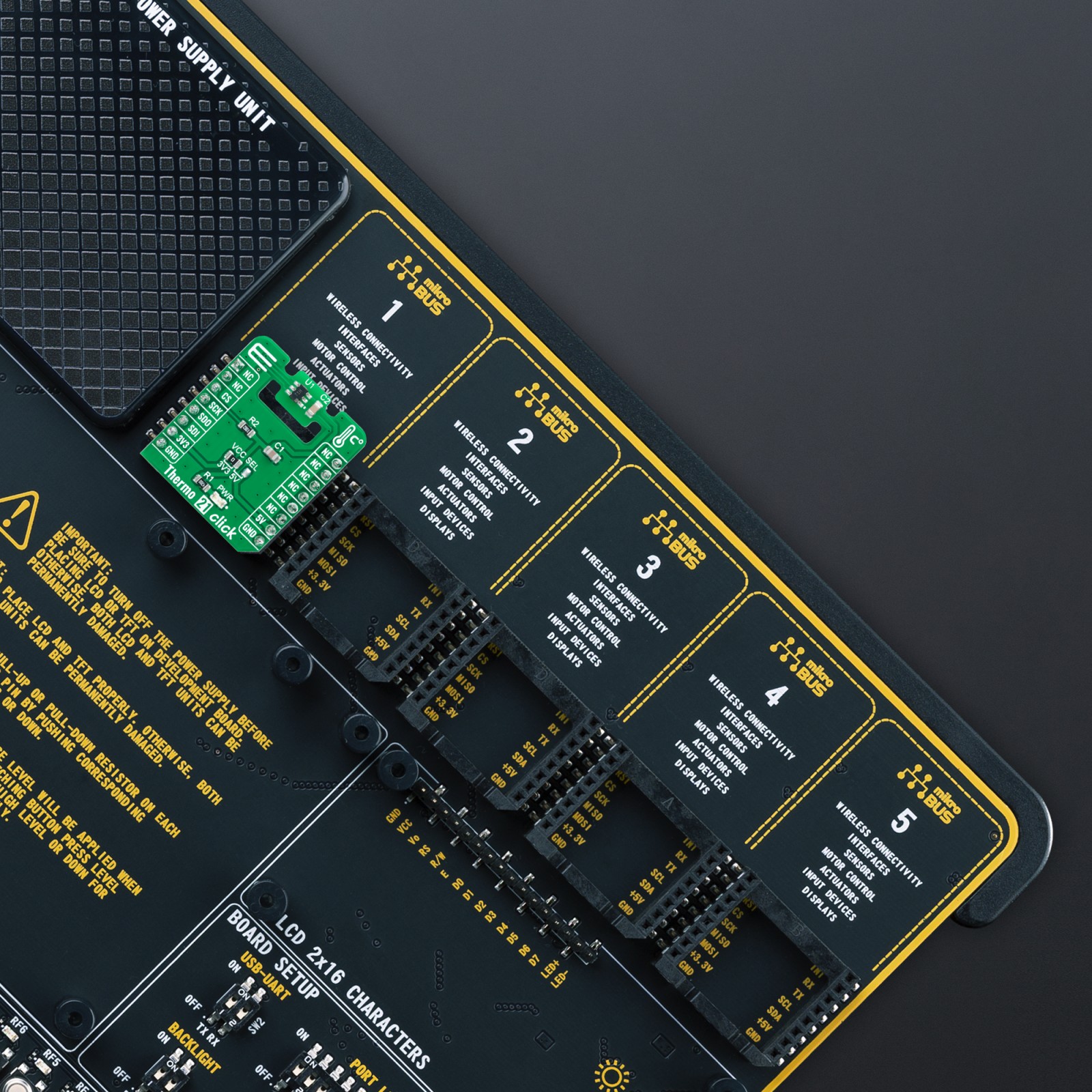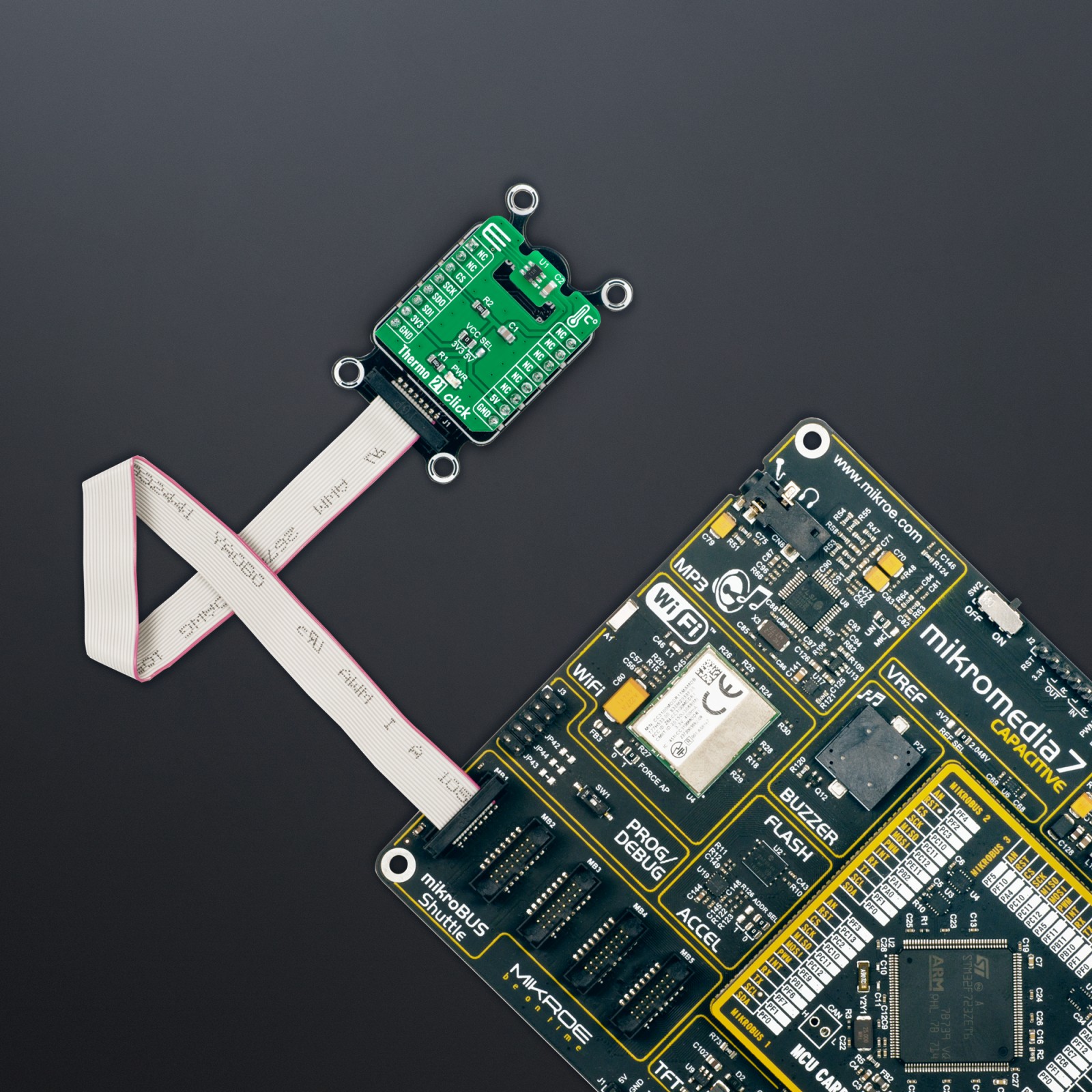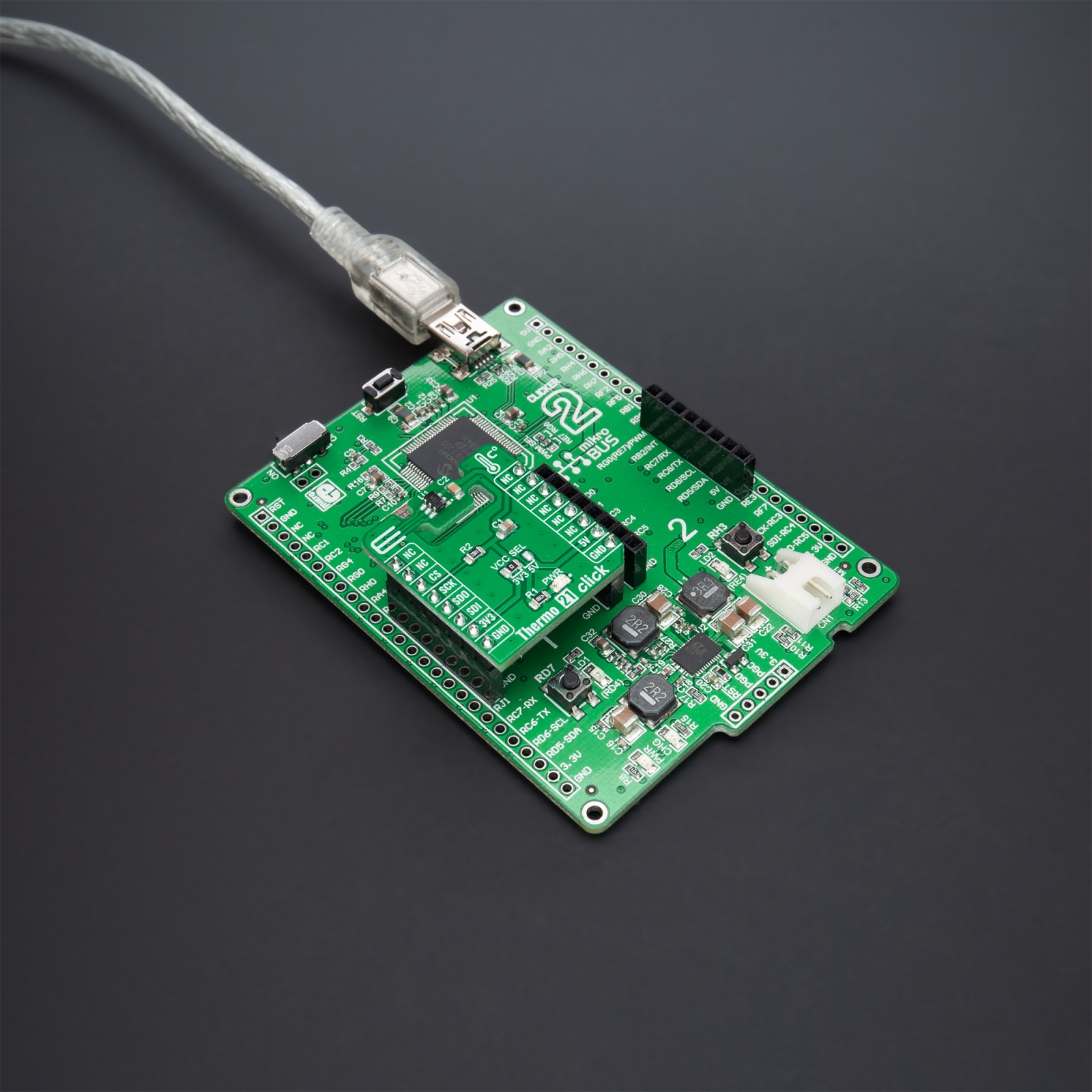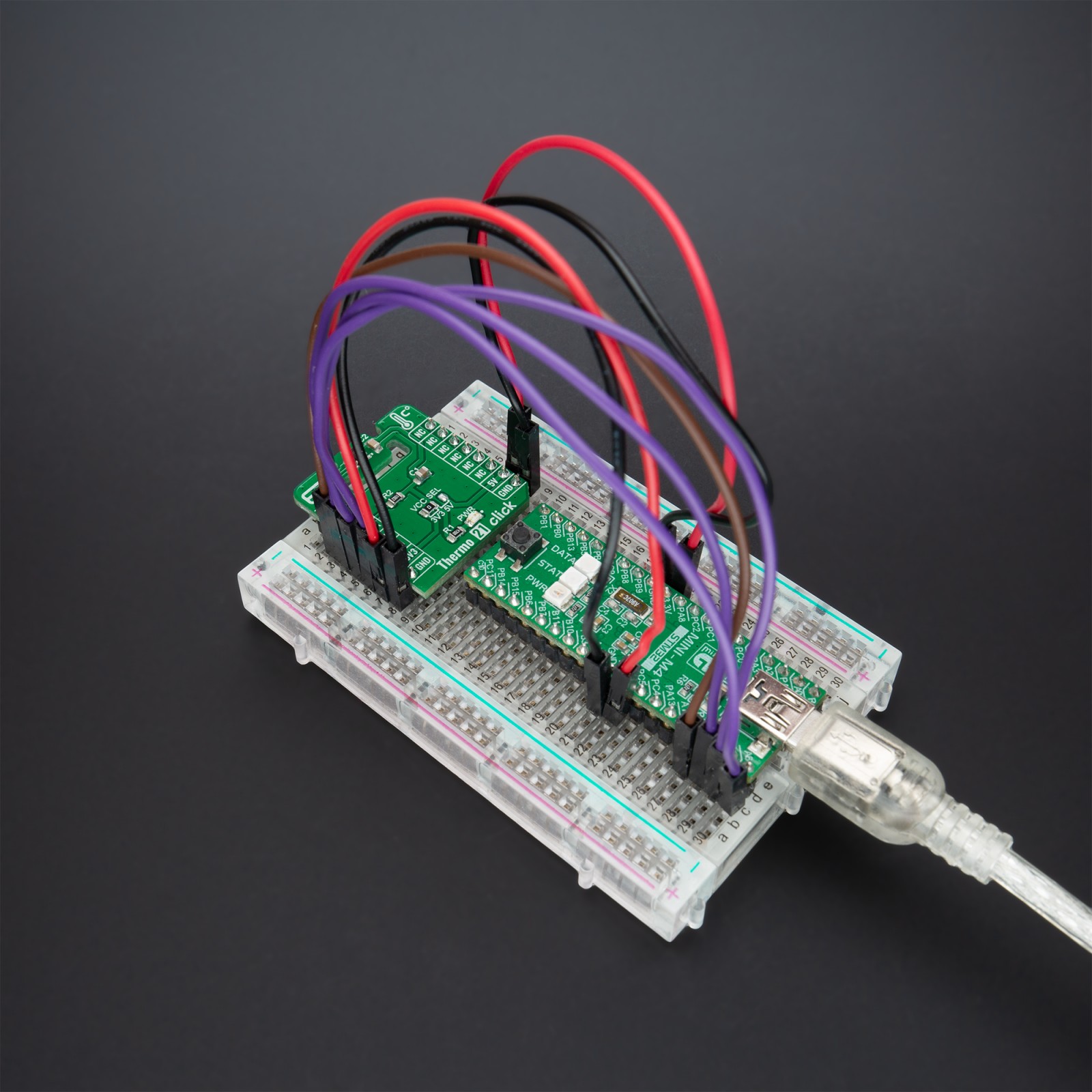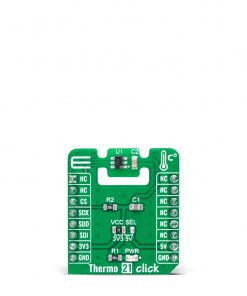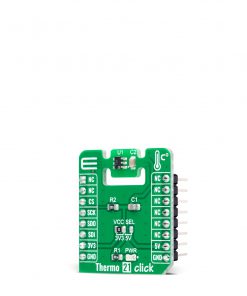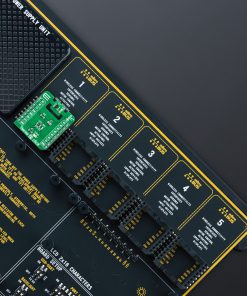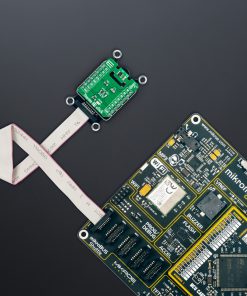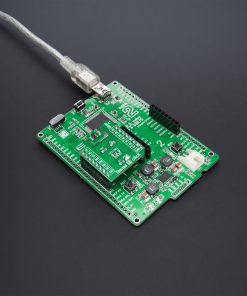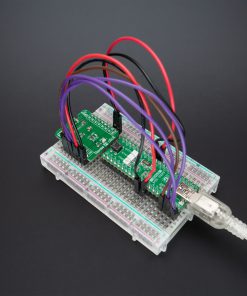Thermo 21 Click
R410.00 ex. VAT
Thermo 21 Click is a compact add-on board that provides an accurate temperature measurement. This board features the ADT7301, a high-precision digital temperature sensor from Analog Devices. The ADT7301 houses an on-chip temperature sensor, a 13-bit A/D converter, a reference circuit, and serial interface logic functions in one package. Characterized by its high accuracy (up to ±0.5°C typical) and high resolution of 0.03125°C, this temperature sensor provides temperature data to the host controller with a configurable SPI interface. This Click board™ is appropriate for process control, environmental monitoring, domestic appliances, electronic test equipment, or other temperature measurement applications.
Thermo 21 Click is supported by a mikroSDK compliant library, which includes functions that simplify software development. This Click board™ comes as a fully tested product, ready to be used on a system equipped with the mikroBUS™ socket.
Stock: Lead-time applicable.
| 5+ | R389.50 |
| 10+ | R369.00 |
| 15+ | R348.50 |
| 20+ | R335.38 |

